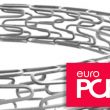Data from randomized studies are also supported by the SCAAR registry, in which ultrathin-strut stents show real-world advantages. Patients with small vessels who received ultrathin-strut stents are less likely to undergo revascularization at 3 years than those who received first-generation thin-strut devices, according to the BIO-RESORT trial, presented during the first day of the annual...
The Most Read Scientific Articles in Interventional Cardiology
1- Long-Term Foramen Ovale Closure after Cryptogenic Stroke Patent foramen ovale closure is the standard treatment for cryptogenic stroke patients. However, there are is little information on its long-term evolution. Read more 2- Descending Thoracic Aortic Aneurysms: Is There a New Plan A? The last available evidence suggests that open surgery should be the...
Outcomes of MAIN-COMPARE: A 10-Year Follow-Up for a Historical Rivalry
Angioplasty and myocardial revascularization surgery have competed over the left main coronary artery for a long time. There may be many points of view involved in the interpretation of trial outcomes. While surgeons consider the left main coronary artery to be suitable for surgery (except when faced with surgical contraindications), interventional cardiologists see the left...
Subclavian and Axillary Access for TAVR: a Valid Alternative
Courtesy of Dr. Carlos Fava. The femoral approach is preferred when it comes to TAVR, but sometimes it is not viable. This is when other access sites come into play, such as the trans-subclavian/axillary (TS/TAx), the apical, transcaval, transcarotid (TC) or transaortic. At present, few studies have looked into this matter, which is why it...
DES and DCB with Similar Results in Femoropopliteal Artery Disease
Courtesy of Dr. Carlos Fava. Nowadays, peripheral interventions are on the rise and the technological development of stents and balloons would help achieve better outcomes. Both drug-eluting stents (DES) and drug-coated balloons (DCB) have proved to be beneficial for femoropopliteal interventions, but the actual role of each of these technologies remains unclear. This prospective, randomized 1:1...
Revascularization in Patients with Multivessel Disease, Diabetes, and Kidney Disease
According to this new study, in patients with coronary disease, diabetes, and chronic kidney disease who underwent revascularization through angioplasty or surgery, events are similar. This is one of the first studies painting the real picture for the prognosis of patients revascularized in these conditions (diabetes plus chronic kidney disease). At first sight, these...
The Most Relevant Articles of 2018 in Peripheral Vascular Disease
1- What’s New in the European Guidelines on Peripheral Arterial Disease Since the last version of the European guidelines on the diagnosis and treatment of peripheral arterial disease in 2011, there have been many trials and registries that warrant guideline adjustments in many aspects. The first novelty is the teamwork that gave way to these...
Outcomes of Contemporary DES in Patients with Diabetes: Do They Render Freedom Obsolete?
Despite our high hopes for new-generation drug-eluting stents (DES), patients with diabetes still have a different prognosis, both clinical and angiographic, compared with non-diabetic patients. Authors sought to investigate the impact of diabetes on patients who underwent drug-eluting stent implantation in the BIONICS (BioNIR Ridaforolimus Eluting Coronary Stent System in Coronary Stenosis) trial. This...
The “Ten Commandments” of Myocardial Revascularization According to Europe
The new European guidelines on myocardial revascularization were developed by a joint effort of the European Society of Cardiology (ESC) and the European Association of Cardiovascular Surgery (EACTS). These guidelines are intended to support clinical practice with pragmatic recommendations based on currently available evidence and on personal experience, whenever evidence is missing. Both coronary angioplasty...
Early Strut Coverage and Its Implications for Dual Antiplatelet Therapy
Optical coherence tomography (OCT)-guided drug-eluting stent implantation improves early strut coverage compared with angiography-guided angioplasty. No difference was observed in terms of strut coverage between permanent-polymer everolimus-eluting stents and bioresorbable-polymer biolimus-eluting stents. Short-term dual antiplatelet therapy may be feasible in selected patients with early strut coverage. This study sought to measure early strut coverage...









